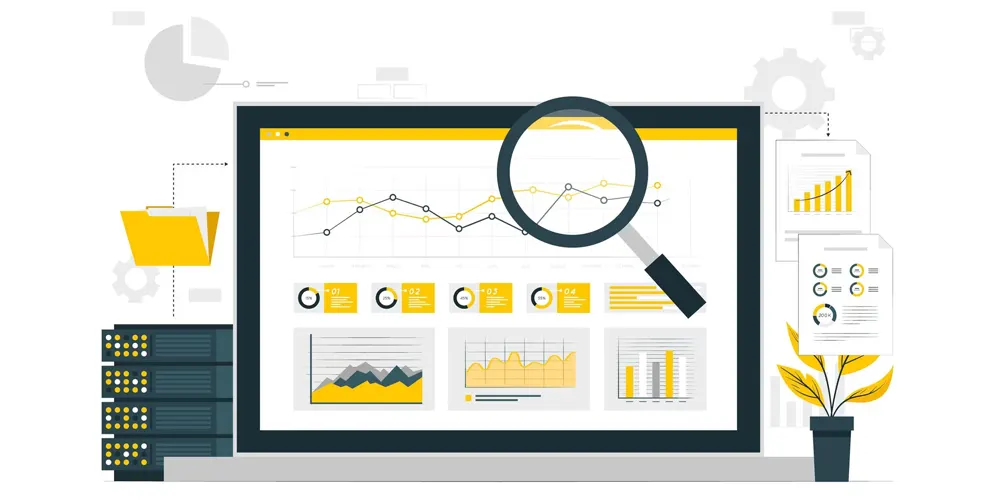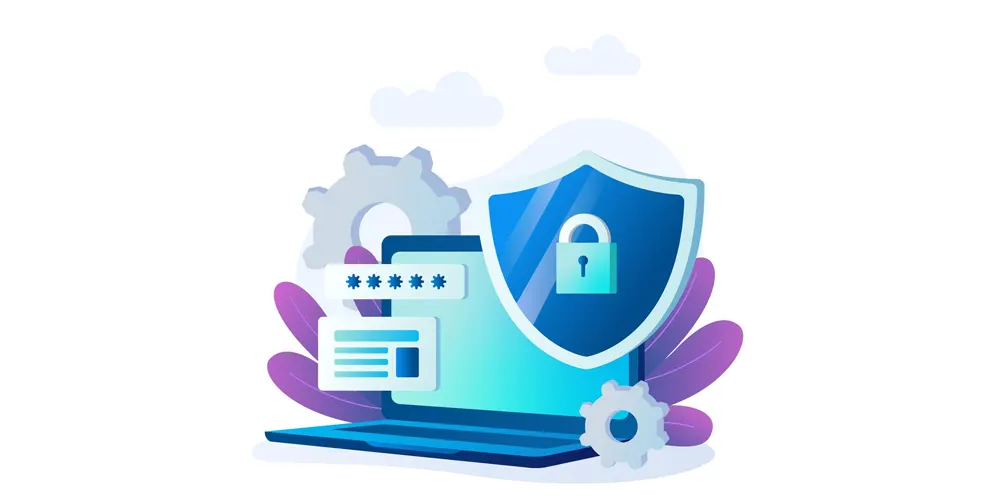Understanding the Complete Scope of a VoIP Network Security Audit
The VoIP Industry is amidst a promising yet controversial phase. On one end the Industry has registered a 212% growth in the past two years. On the other end, it has enabled robocall scams amounting to almost $40 billion in the US alone in 2022.
So it should come as no surprise that people want to make the most out of the benefits that VoIP has to offer, especially the businesses. However, safety and security are their top concerns. Perhaps the only thing holding most back from embracing VoIP.
If you’re a carrier who wants to overcome this hurdle, this article is going to be of tremendous help. To ensure safety and security, what you need is a VoIP Network Security Audit.
We shall be exploring the critical scope areas of conducting a security audit in this blog. This will help you understand the different ways in which you can guarantee safety and security to your customers and grow your business.
Let’s get started then!
1. Infrastructure Assessment

Infrastructure Assessment encompasses a comprehensive evaluation of the entire network architecture and physical components.
This includes an examination of routers, switches, firewalls, servers, and other network devices. The audit ensures these devices are configured securely and in compliance with industry standards.
The assessment also verifies the integrity of network cabling, power sources, and physical access controls to prevent unauthorized entry.
Additionally, it involves reviewing the redundancy and failover mechanisms in place to maintain network availability.
By assessing the infrastructure, the audit aims to identify vulnerabilities, misconfigurations, or weaknesses that could compromise network security. It also ensures the network's reliability, scalability, and resilience to potential threats and disruptions.
2. Traffic Analysis

The scope of traffic analysis in a VoIP carrier's network security audit involves a thorough examination of network traffic patterns and data flows to identify anomalies and potential security risks.
This assessment focuses on scrutinizing real-time and historical network traffic to detect unauthorized access, unusual data transfers, or suspicious communication patterns.
It also includes assessing the Quality of Service (QoS) mechanisms in place to prioritize voice and multimedia traffic effectively.
By conducting traffic analysis, the audit aims to pinpoint any signs of security breaches, such as Distributed Denial of Service (DDoS) attacks, unauthorized access attempts, or unusual spikes in data traffic.
This comprehensive scrutiny helps in proactively identifying and mitigating security threats. Thus, it ensures the confidentiality, integrity, and availability of VoIP services, and maintains a high-quality user experience.
3. Authentication and Access Control

Authentication and access control encompasses a meticulous evaluation of the mechanisms and policies governing user access to the network and its resources.
This assessment includes an examination of user authentication methods, such as password policies, multi-factor authentication, and user credential management.
It also involves a review of role-based access control (RBAC) systems, ensuring that users have appropriate permissions based on their roles within the organization.
The audit verifies the effectiveness of access controls at various levels, including network devices, servers, and VoIP applications, to prevent unauthorized access.
The audit aims to identify any weaknesses in user verification processes and access permissions that could expose the network to security risks, thus enhancing the overall security posture of the VoIP carrier's network.
4. Data Encryption

Data Encryption control involves a comprehensive evaluation of encryption mechanisms used to protect sensitive data, especially during transmission and at rest.
This assessment includes a thorough review of encryption protocols, key management practices, and the implementation of end-to-end encryption across VoIP communication channels.
It also entails examining the use of secure sockets layer (SSL) or transport layer security (TLS) for securing signaling and media traffic. Thus, ensuring that encryption standards meet industry best practices.
The audit aims to verify that sensitive information, such as call content and user credentials, remains confidential and secure during transit.
Identifying any encryption vulnerabilities or weaknesses helps bolster data protection measures and safeguards against eavesdropping or data interception. This further enhances the overall security of the VoIP carrier's network.
5. VoIP Protocol Security

VoIP Protocol Security represents a thorough and encompassing evaluation of the entire VoIP infrastructure. This comprehensive examination involves meticulously reviewing the configuration and implementation of essential VoIP protocols.
These include protocols such as SIP (Session Initiation Protocol) and H.323. It ensures that these protocols are set up in a manner that adheres to the highest security standards while identifying and rectifying any deviations.
Furthermore, this audit extends its scope to assess the robustness of authentication and authorization mechanisms in place. It guarantees that only authorized personnel can access critical VoIP resources.
It meticulously examines encryption methods for voice traffic (e.g., SRTP) and signaling (e.g., TLS). It verifies that encryption is appropriately configured and aligns with the latest cryptographic standards.
In addition to protocol security, the audit evaluates firewall rules, the effectiveness of intrusion detection and prevention systems (IDS/IPS), and the security of VoIP gateways and media servers.
6. Network Monitoring

Network monitoring entails an extensive examination of the entire VoIP infrastructure's operational health and security. This comprehensive assessment begins with an analysis of network traffic patterns to identify anomalies.
It involves scrutinizing real-time network monitoring tools to ensure that they are effectively tracking VoIP traffic. This should include call data, signaling, and media streams.
Moreover, the audit encompasses an evaluation of Quality of Service (QoS) parameters to guarantee that VoIP traffic is given priority. It also verifies that the network's bandwidth allocation is optimized for VoIP.
Security-wise, network monitoring includes continuous surveillance for unauthorized access attempts, unusual traffic spikes, and signs of Denial of Service (DoS) attacks.
Furthermore, the audit involves the assessment of logs and alerts generated by network monitoring systems. This ensures their completeness and prompt response to potential security incidents.
7. Incident Response Planning

Within the context of incident response planning, the audit encompasses a strategic and proactive evaluation of the entire VoIP infrastructure to fortify its resilience against potential security breaches and system failures.
This comprehensive assessment begins by examining existing incident response protocols and procedures. It is ensured that they are up-to-date and aligned with industry best practices.
It evaluates the effectiveness of communication and escalation channels. This ensures that all stakeholders are well-prepared to respond swiftly to any security incidents or disruptions in VoIP services.
Furthermore, the audit involves the identification of vulnerabilities within the VoIP network through thorough testing and analysis. It allows for the development of precise incident response strategies tailored to potential threats.
This also verifies the availability of backup systems and data recovery plans, ensuring that VoIP services can be swiftly restored in case of a breach or outage.
Moreover, it reviews the adequacy of staff training and awareness programs to equip the team with the skills necessary to respond effectively to security incidents.
8. Vendor Security

With a focus on vendor security, the audit involves the evaluation of the relationships and dependencies between an organization and its VoIP technology providers.
This assessment encompasses several key facets. Firstly, it examines the security practices and standards upheld by VoIP vendors. This ensures they align with the organization's security policies and regulatory requirements.
Secondly, the audit evaluates the security of the VoIP vendor's software, hardware, and services. Thus, ensuring that they are free from vulnerabilities that could compromise the organization's network.
All of this includes assessing the vendor's patch management processes, vulnerability disclosure mechanisms, and adherence to encryption standards.
Additionally, the audit assesses the vendor's incident response and disaster recovery capabilities. Which is done to verify that they can swiftly respond to security incidents or service disruptions.
It also considers the vendor's data privacy and compliance measures, ensuring that they align with applicable regulations and protect sensitive information.
9. Compliance with Regulations

Within the realm of compliance and regulation, is a comprehensive assessment designed to ensure that an organization's VoIP infrastructure adheres to the legal and industry-specific requirements governing telecommunications and data security.
The audit covers a range of critical aspects. Firstly, it examines whether the organization's VoIP system complies with regulatory mandates, such as the FCC regulations in the United States or equivalent standards in other regions.
It assesses the implementation of security controls to safeguard sensitive data. The data in question here are call recordings and customer information, by data protection laws like GDPR or HIPAA.
Moreover, the audit scrutinizes the organization's record-keeping practices. Thus, ensuring that it retains VoIP-related data for the required duration, as mandated by regulations specific to each region.
It assesses the organization's ability to support lawful interception requests and emergency services, as stipulated by telecommunications laws
Additionally, it evaluates the organization's readiness to undergo compliance audits and provides recommendations to bridge any compliance gaps.
10. Physical Security

The audit extends its scope beyond digital measures, in terms of physical security, to safeguard the physical infrastructure hosting VoIP equipment.
This comprehensive assessment begins with an examination of access control mechanisms. It needs to be ensured that only authorized personnel can enter critical areas where VoIP servers, switches, and routers are housed.
It evaluates the effectiveness of security measures such as biometric authentication, RFID card readers, and surveillance cameras to deter unauthorized access.
Additionally, the audit assesses the physical layout of data centers and office spaces. The aim here is to ensure that VoIP equipment is situated in secure, controlled environments, away from potential hazards or vulnerabilities.
It scrutinizes environmental controls, like temperature and humidity regulation, to prevent hardware damage or failure. The audit also verifies the presence of intrusion detection systems (IDS) and alarms to promptly respond to unauthorized access attempts.
Conclusion
Security, data protection and privacy are the top concerns of today’s customers. The bad actors have proved themselves a menace when they get their hands on confidential data. Thus, ensuring the security and safety of customers has become pivotal.
A VoIP Network Security Audit will help you achieve and exceed customer expectations in terms of safety and security.
A lot can be uncovered and improved through a VoIP Network Security Audit. The scope of this audit is wide and consists pretty much of every functional area of VoIP.
Of those, we’ve covered 10 critical areas. Fortifying those will enable you, as a VoIP carrier, to consolidate security, integrity, confidentiality and service availability.
























































































































